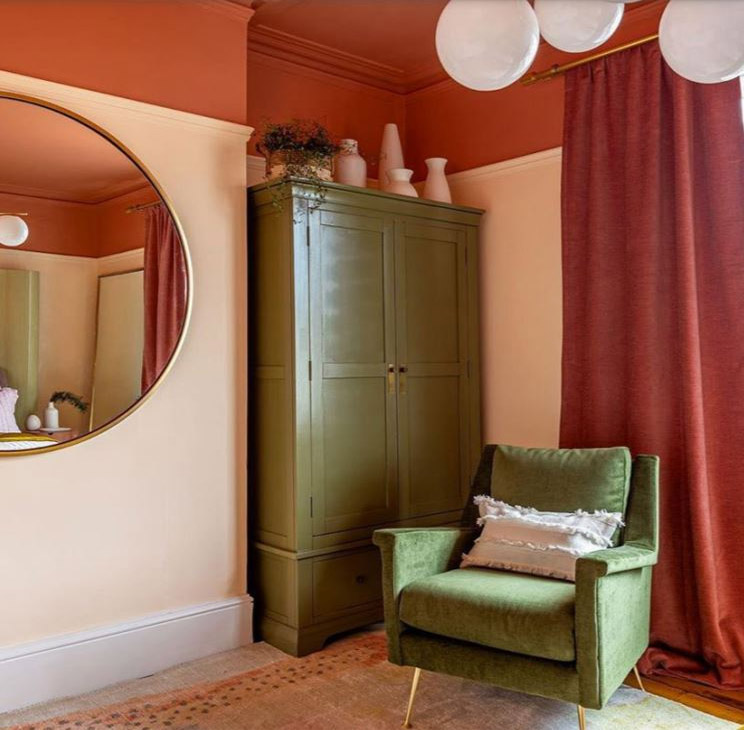How to Clean Painted Walls
Keep Your Walls Looking Good As New.
Keep Your Walls Looking Good As New
Ceilings don’t always get as much love as they should when it comes to redecorating - not because painted ceilings don’t look good or because they aren’t important, but because...well, it’s hard to reach up there! Even when the colour’s starting to fade and you’ve got watermarks from when you overran the bath upstairs, it’s tempting to just leave things as they are.
But we know how good it feels to finish painting a room top to bottom. That’s why we’re going to show you how to paint a ceiling with ease, so every surface of your home gets the special attention it deserves.
WHAT YOU WILL NEED:
- Bucket
- Rubber gloves
- Soft sponge
- Washcloth
- Dust cloth
- Dust sheet/floor protector
- Masking tape
- Warm water
- Washing up liquid/mild detergent (depending on paint type)
- White vinegar (depending on paint type)
- Baking soda (for stains)
1. DETERMINE WHAT KIND OF PAINT IS ON YOUR WALL
The way you go about cleaning your walls depends on what type of paint is on them. Tweaking your technique to go with the paint finish will help ensure that, while your wall gets a thorough wash, none of the paint comes off.
Eggshell finish paint
Paints with eggshell finishes are usually less durable than other paints and require a gentle hand when it comes to cleaning. Opt for a very mild detergent without any harsh chemicals, mixed with warm water.
Gloss or Semi-Gloss finish paint
Gloss and semi-gloss paints tend to be used in kitchens and bathrooms, where there is potential for splashback. This makes them more durable than eggshell finish paint, and they will be able to withstand a degreasing detergent. However, gloss paints can be scratched quite easily, so we recommend using your softest sponge.

Latex paint
Latex paint is water-based and usually bought in large quantities to paint low-traffic, extensive areas such as ceilings. Since it is not very durable, it is best to use a mild detergent and water, as with eggshell finish paints.
Oil-based paint
Oil-based paints are very durable, meaning you can traditionally used when someone wants the colour to last for a long time. This makes oil-based paints very hardy and durable. To clean an oil-based paint wall properly, you can add white vinegar to your water and washing up liquid solution.
2. CLEAR AND DUST THE PAINTED WALLS YOU WANT TO CLEAN
Before you start scrubbing, remove anything hanging on the walls, such as lamps, photos and paintings. You might also want to lay down a dust sheet to spare your flooring from any cleaning liquid. Then, use a dust cloth to wipe down your walls and remove any loose grime.
3. PROTECT LIGHT SWITCHES AND PLUG SOCKETS ON YOUR PAINTED WALLS
If the walls you are washing have light switches or plug sockets, it is a good idea to cover them - or at least create a border around them - with masking tape. If possible, switch off all before you begin cleaning.
4. WASH YOUR PAINTED WALLS
If your walls have no obvious stains or marks, you might be able to clean them using plain warm water. Simply fill your bucket, dip in a soft sponge and wring it out thoroughly. Then, apply it to your walls, being mindful of how hard you scrub. Remember to be gentle if working with walls that have an eggshell or latex finish, to avoid lifting any of the paint from the surface.
If your walls do have marks, put on your rubber gloves and fill the bucket with soapy water, made using washing up liquid. If the paint is old-based, you can also add a dash of white vinegar. Dip your sponge into the soapy water and do a quick spot-check by applying it to a place of low-visibility, such as behind the sofa. This way you can test whether the detergent does any damage to your wall.
Once you’re in the clear, gently wash the walls using broad, circular motions, starting from a top corner.
5. TARGET LEFTOVER SPOTS AND STAINS ON YOUR PAINTED WALLS
If you have any obvious stains or marks on your wall, first use a damp sponge to try and remove them. If this doesn’t work, you can create a mix of water and baking soda. Use this to dab at the stain. Once the stain is removed, you can wipe away any residue with a clean cloth.
6. IF NEEDED, TOUCH UP YOUR PAINTED WALLS
It could be that nothing you do will remove a stubborn stain or mark. In this case, the only solution might be to touch up your wall with paint. If you can, use the original paint and the same method of application. For instance, if you applied the paint with a paintbrush, use a paintbrush this time, too. This will help keep the finish even and consistent.
Hopefully following these six steps will leave you with walls looking just how they did when you first painted them. Now all that’s left is to find out how to clean wallpaper! Luckily, we have a blog on that, too.

